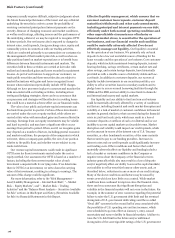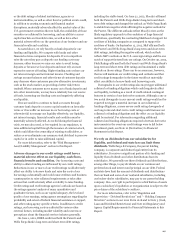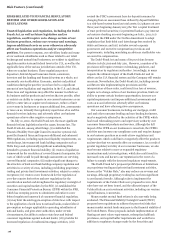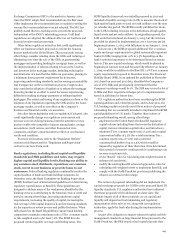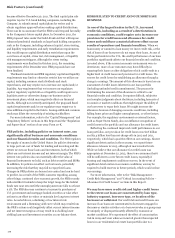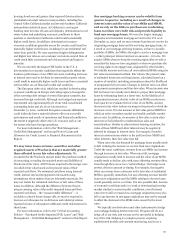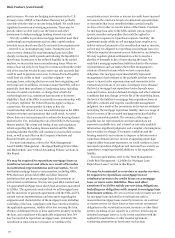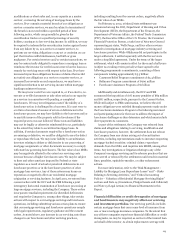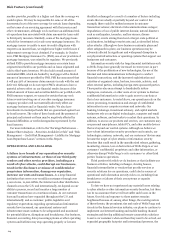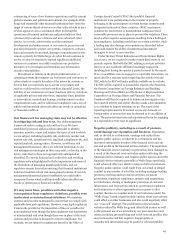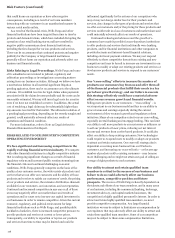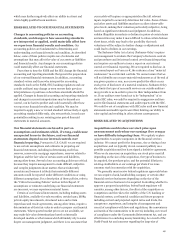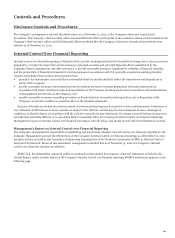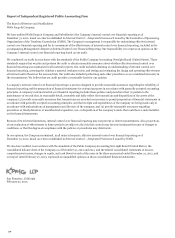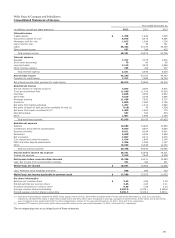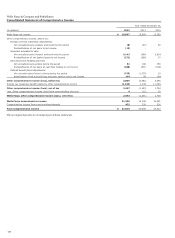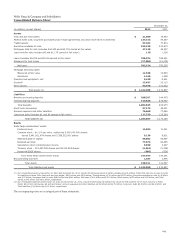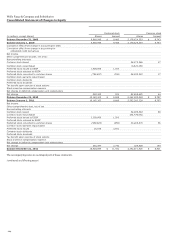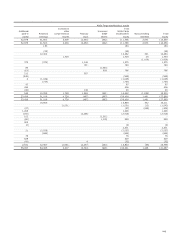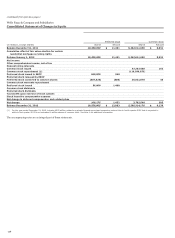Wells Fargo 2012 Annual Report Download - page 118
Download and view the complete annual report
Please find page 118 of the 2012 Wells Fargo annual report below. You can navigate through the pages in the report by either clicking on the pages listed below, or by using the keyword search tool below to find specific information within the annual report.Risk Factors (continued)
that could harm our reputation or have other negative
consequences, including as a result of our team members
interacting with our customers in an unauthorized manner in
various social media outlets.
As a result of the financial crisis, Wells Fargo and other
financial institutions have been targeted from time to time by
protests and demonstrations, which have included disrupting the
operation of our retail banking stores and have resulted in
negative public commentary about financial institutions,
including the fees charged for various products and services.
There can be no assurance that continued protests and negative
publicity for the Company or large financial institutions
generally will not harm our reputation and adversely affect our
business and financial results.
Risks Relating to Legal Proceedings. Wells Fargo and some
of its subsidiaries are involved in judicial, regulatory and
arbitration proceedings or investigations concerning matters
arising from our business activities. Although we believe we have
a meritorious defense in all material significant litigation
pending against us, there can be no assurance as to the ultimate
outcome. We establish reserves for legal claims when payments
associated with the claims become probable and the costs can be
reasonably estimated. We may still incur legal costs for a matter
even if we have not established a reserve. In addition, the actual
cost of resolving a legal claim may be substantially higher than
any amounts reserved for that matter. The ultimate resolution of
a pending legal proceeding, depending on the remedy sought and
granted, could materially adversely affect our results of
operations and financial condition.
For more information, refer to Note 15 (Legal Actions) to
Financial Statements in this Report.
RISKS RELATED TO OUR INDUSTRY’S COMPETITIVE
OPERATING ENVIRONMENT
We face significant and increasing competition in the
rapidly evolving financial services industry. We compete
with other financial institutions in a highly competitive industry
that is undergoing significant changes as a result of financial
regulatory reform and increased public scrutiny stemming from
the financial crisis and continued challenging economic
conditions. Wells Fargo generally competes on the basis of the
quality of our customer service, the wide variety of products and
services that we can offer our customers and the ability of those
products and services to satisfy our customers’ needs, the pricing
of our products and services, the extensive distribution channels
available for our customers, our innovation, and our reputation.
Continued and increased competition in any one or all of these
areas may negatively affect our market share and results of
operations and/or cause us to increase our capital investment in
our businesses in order to remain competitive. Given the current
economic, regulatory, and political environment for large
financial institutions such as Wells Fargo, and possible public
backlash to bank fees, there is increased competitive pressure to
provide products and services at current or lower prices.
Consequently, our ability to reposition or reprice our products
and services from time to time may be limited and could be
influenced significantly by the actions of our competitors who
may or may not charge similar fees for their products and
services. Any changes in the types of products and services that
we offer our customers and/or the pricing for those products and
services could result in a loss of customers and market share and
could materially adversely affect our results of operations.
Continued technological advances and the growth of e-
commerce have made it possible for non-depository institutions
to offer products and services that traditionally were banking
products, and for financial institutions and other companies to
provide electronic and internet-based financial solutions,
including electronic payment solutions. We may not respond
effectively to these competitive threats from existing and new
competitors and may be forced to increase our investment in our
business to modify or adapt our existing products and services or
develop new products and services to respond to our customers’
needs.
Our “cross-selling” efforts to increase the number of
products our customers buy from us and offer them all
of the financial products that fulfill their needs is a key
part of our growth strategy, and our failure to execute
this strategy effectively could have a material adverse
effect on our revenue growth and financial results.
Selling more products to our customers – “cross-selling” – is
very important to our business model and key to our ability to
grow revenue and earnings especially during the current
environment of slow economic growth and regulatory reform
initiatives. Many of our competitors also focus on cross-selling,
especially in retail banking and mortgage lending. This can limit
our ability to sell more products to our customers or influence us
to sell our products at lower prices, reducing our net interest
income and revenue from our fee-based products. It could also
affect our ability to keep existing customers. New technologies
could require us to spend more to modify or adapt our products
to attract and retain customers. Our cross-sell strategy also is
dependent on earning more business from our Wachovia
customers, and increasing our cross-sell ratio – or the average
number of products sold to existing customers – may become
more challenging and we might not attain our goal of selling an
average of eight products to each customer.
Our ability to attract and retain qualified team
members is critical to the success of our business and
failure to do so could adversely affect our business
performance, competitive position and future
prospects. The success of Wells Fargo is heavily dependent on
the talents and efforts of our team members, and in many areas
of our business, including the commercial banking, brokerage,
investment advisory, and capital markets businesses, the
competition for highly qualified personnel is intense. In order to
attract and retain highly qualified team members, we must
provide competitive compensation. As a large financial
institution we may be subject to limitations on compensation by
our regulators that may adversely affect our ability to attract and
retain these qualified team members. Some of our competitors
may not be subject to these same compensation limitations,
116


